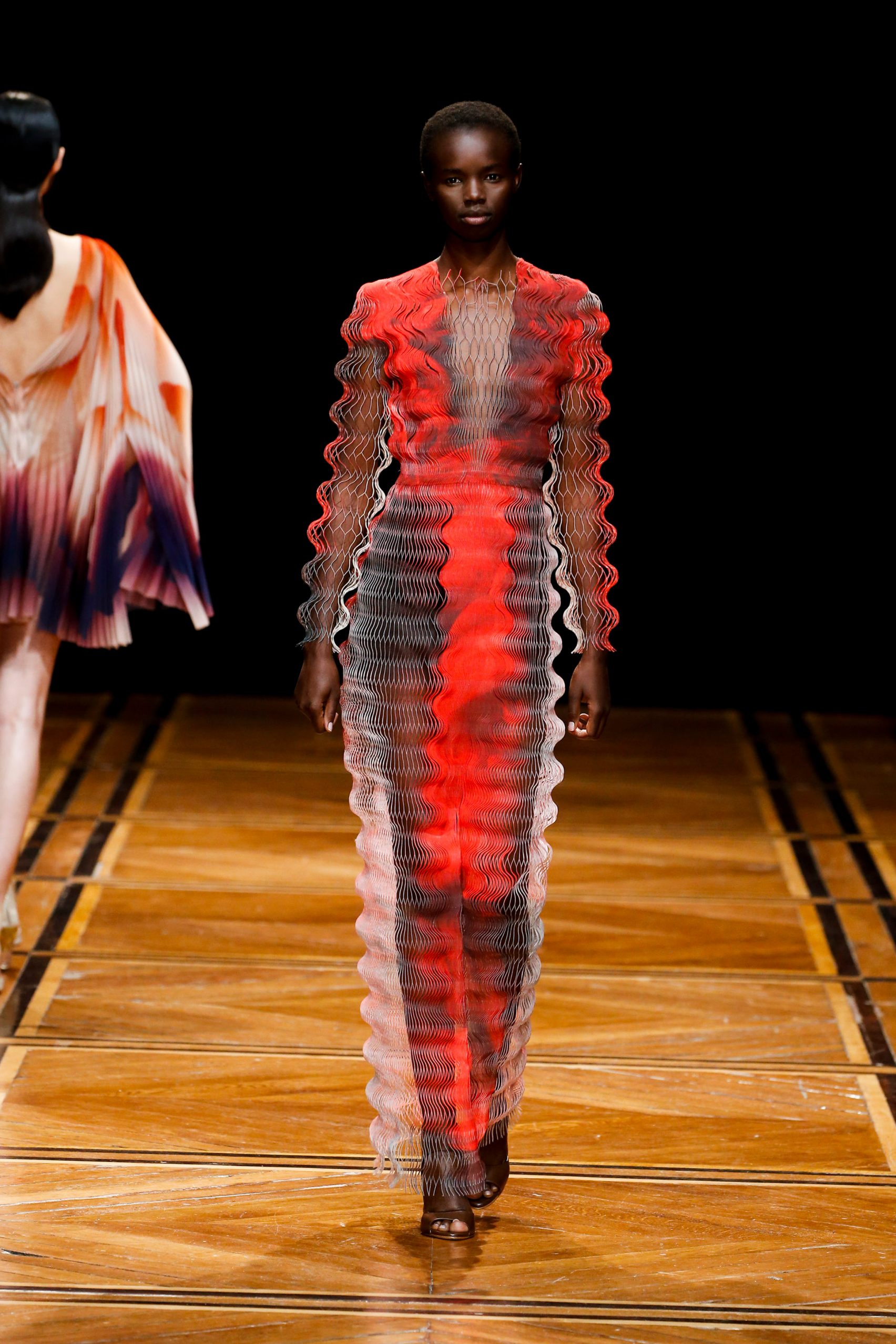Shift Souls...
Couple of weeks ago saw Iris van Herpen present her Shift Souls collection at the Musee des Beaux-Arts this week as part of the haute couture shows in Paris, alongside a laser light installation by contemporary artist Nick Verstand.
There were 18 garments in total featuring voluminous spheres, elaborately waved forms and laser-cut detailing, were inspired by human-animal hybrids. Topographic faces and girls floating like butterflies, human slinkies or walking koi carp complete with 3D face jewels
She looked to advances in DNA engineering and female forms in mythology when imagining this sculptural couture collection. The colour palette ranged from shades of indigo and purple to ochre and yellow, and included prints that created optical illusions to "distort the body".
Van Herpen thinks the subject of hybrid creatures is important given recent scientific breakthroughs in genetic engineering.
"With the advances in DNA engineering and the first successful creations of human-animal hybrids called cybrids, the mythological dreams of humankind since the dawn of civilisation are shifting to the canvas of science. While the scientific and ethical implications of cybrids are still unclear, this collection expresses the fact that this reality is upon us."
She revealed that her initial inspiration came from Harmonia Macrocosmica, an early-1600s star atlas by German-Dutch cartographer Andreas Cellarius, as well as historical representations of mythological and astrological creatures throughout history.
"For Shift Souls, I looked at the evolution of the human shape, its idealisation through time and the hybridisation of the female forms within mythology. Especially the imagination and the fluidity within identity change in Japanese mythology gave me the inspiration to explore the deeper meaning of identity and how immaterial and mutable it can become within the current coalescence of our digital bodies”
Accompanying the garments was a series of 3D-printed face jewellery made in collaboration with the Delft University of Technology, developed by 3D-scanning the model's faces and mapping out a shape based on the shifts in density across the face.
For the show's finale, she worked with Dutch artist Verstand on a light installation that used walls of laser lights to create a "dreamscape" of circulating clouds on the venue ceiling.
Now doesn’t all the beauty help brighten up this cold and frosty Friday morning…
Queen Marie









